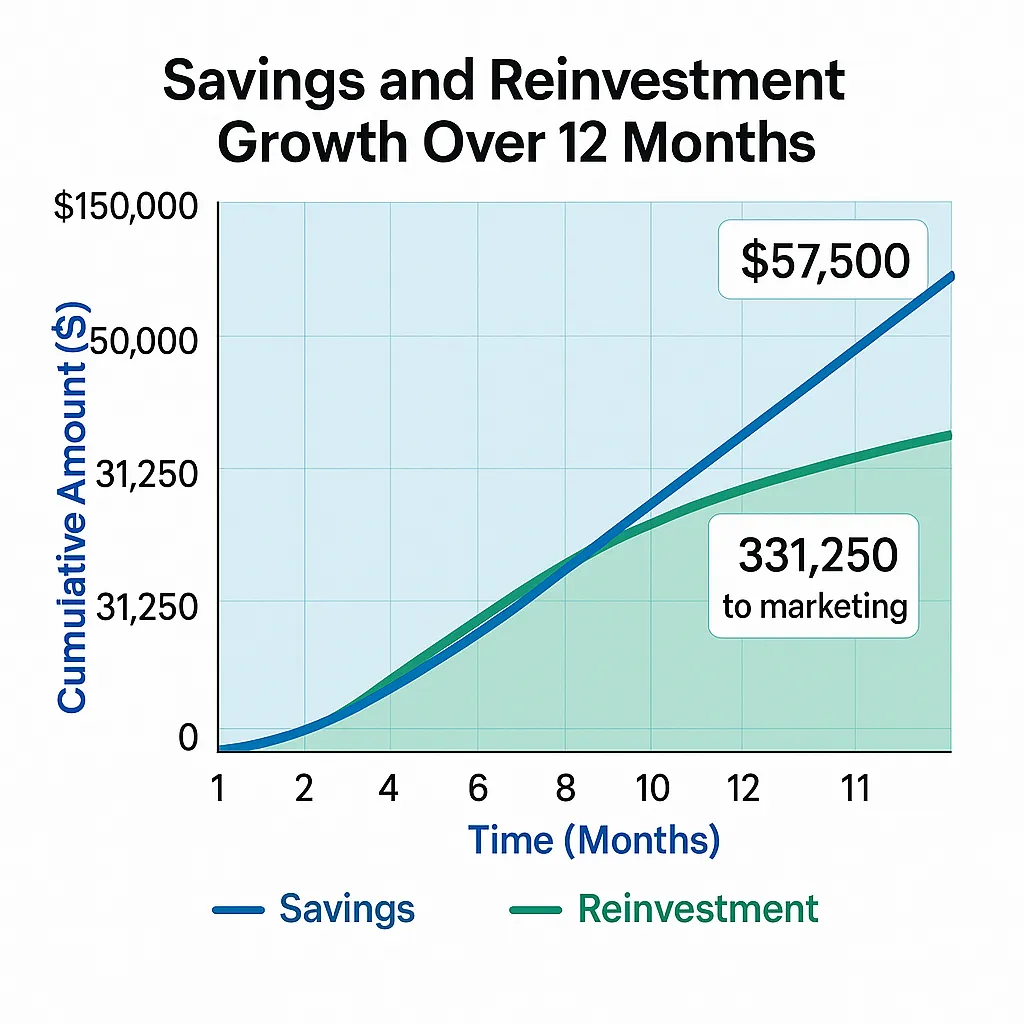Reinvest for Growth: The WIMPER Playbook to Achieve 18-30% Workers’ Comp Savings
The WIMPER Program (Wellness Integrated Medical Plan Expense Reimbursement) offers businesses a strategic way to reduce workers’ compensation costs by 18-30% through optimized tax codes and wellness initiatives. This playbook outlines how to implement WIMPER, calculate workers’ comp savings, and reinvest those funds into growth opportunities such as marketing, employee development, or new business ventures.
Stage 1: Evaluate Current Workers’ Compensation Costs
Objective: Establish a baseline of current workers’ compensation expenses to measure WIMPER’s impact.
Action Steps:
Collect data on the total cost of workers’ compensation, number of employees, and current premium percentage.
Assess the average cost per employee and identify areas where injuries or claims are driving up premiums.
Document the baseline for future comparison after WIMPER implementation.
Key Metrics:
o Total annual workers’ compensation cost.
Current workers’ compensation premium percentage.
Average cost per employee.
Stage 2: Implement WIMPER for Workers’ Comp Reduction
Objective: Set up the WIMPER Program to achieve 18-30% savings on workers’ compensation costs.
Action Steps:
Partner with Bill Wilkie Business Solutions to integrate WIMPER’s wellness and safety protocols, which reduce workplace injuries and claims.
Adjust tax codes and insurance plans to qualify for WIMPER’s cost-saving benefits, targeting a 25% reduction as a midpoint (within the 18-30% range).
Train employees on WIMPER’s wellness programs to further lower risk and premiums.
Key Metrics:
Total annual workers’ compensation cost.
Current workers’ compensation premium percentage.
Average cost per employee.
Stage 3: Calculate Workers’ Comp Savings with WIMPER
Objective: Quantify the savings on workers’ compensation to plan reinvestment strategies.
Calculator Example: Below is an example calculation for a business with 50 employees, inspired by the provided savings calculator layout:
Inputs:
• Number of Employees: 50
• Total Cost of Workers’ Compensation (Before WIMPER): $250,000 (as shown in the
• image, implying $5,000 per employee at 10%)
• Current Workers’ Compensation Premium (%): 10%
• WIMPER-Reduced Workers’ Compensation Premium (%): 7.5% (25% reduction within the 18-30% range)
Calculations:
• Total Cost of Workers’ Compensation (After WIMPER): $50,000 × 0.075 × 50 = $187,500 (assuming an average salary of $50,000 per employee)
• Workers’ Comp Savings: $250,000 - $187,500 = $62,500
• Additional Savings (FICA Tax): $800 per employee × 50 = $40,000 (WIMPER’s standard tax savings)
• Health Plan Adjustments: Total Health Insurance Costs (Before WIMPER) = $300,000 (as shown in the image), with a 5% reduction = $300,000 × 0.05 = $15,000
• Total Annual Savings: $62,500 (Workers’ Comp) + $40,000 (FICA) + $15,000 (Health Plan) = $117,500
Action Steps:
Use the WIMPER savings calculator (similar to the provided image) to input your business’s specific workers’ comp costs and premium rates.
Verify the 18-30% reduction with your insurance provider after WIMPER implementation.
Plan reinvestment based on the calculated savings.
Key Metrics:
Total workers’ comp savings (target: 18-30% of current costs).
Total annual savings for the business.
Stage 4: Reinvest Savings for Growth
Objective: Allocate workers’ comp savings into growth initiatives to enhance business performance.
Action Steps:
Allocate 50% of savings ($31,250 in the example) to marketing campaigns to boost lead generation.
Use 30% ($18,750) for employee training programs to improve productivity and safety.
Reserve 20% ($12,500) for new equipment or technology to streamline operations.
Monitor the impact of reinvestment on revenue and employee satisfaction.
Key Metrics:
Percentage of savings reinvested (target: 100%).
Revenue growth from reinvested funds (target: 10% increase within 6 months).
Graph: Workers’ Comp Savings and Reinvestment Over 12 Months
Below is a description of a line graph to visualize the cumulative savings and reinvestment using WIMPER:

Stage 3: Calculate Workers’ Comp Savings with WIMPER
Objective: Quantify the savings on workers’ compensation to plan reinvestment strategies.
Inputs:
• "Will reducing workers’ comp affect coverage?"
"WIMPER optimizes premiums by lowering risk through wellness programs, ensuring coverage remains robust while saving 18-30%."
• "Reinvestment seems risky."
"The savings are predictable with WIMPER’s proven model. We’ll start with a small pilot to demonstrate growth returns."
Action Steps:
Provide case studies (e.g., Mohan’s 40% savings) to build trust.
Offer a 30-day review period to adjust reinvestment strategies if needed.
Key Metrics:
Objection resolution rate (target: 80%+).
Employee feedback on reinvested programs (target: 85% positive).
Stage 6: Scale and Enhance Benefits
Objective: Expand WIMPER’s workers’ comp savings and reinvestment across the business.
Action Steps:
Roll out WIMPER to additional departments or locations to increase total savings.
Use reinvestment success to fund further wellness initiatives, reinforcing the 18-30% reduction.
Leverage charitable donations from WIMPER to enhance your brand’s community presence.
Key Metrics:
Number of new employees covered by WIMPER (target: 10% growth quarterly).
Total reinvestment impact on revenue (target: 15% increase annually).
Impact
By following this WIMPER Playbook, businesses can:
Achieve 18-30% savings on workers’ compensation costs, totaling $62,500 for a 50-employee business.
Reinvest savings into growth areas like marketing and training, driving a 10%+ revenue increase.
Strengthen employee wellness and business resilience at zero net cost.
The WIMPER Program transforms workers’ comp savings into a powerful engine for growth and sustainability.



